
SONATA FRAGMENTS
MUSICAL MEANING AND INTERPRETATION
Robert S. Hatten, editor
SONATA FRAGMENTS
Romantic Narratives in Chopin, Schumann, and Brahms
Andrew Davis
Indiana University Press
This book is a publication of
Indiana University Press
Office of Scholarly Publishing
Herman B Wells Library 350
1320 East 10th Street
Bloomington, Indiana 47405 USA
iupress.indiana.edu
2017 by Andrew Davis
All rights reserved
No part of this book may be reproduced or utilized in any form or by any means, electronic or mechanical, including photocopying and recording, or by any information storage and retrieval system, without permission in writing from the publisher. The Association of American University Presses Resolution on Permissions constitutes the only exception to this prohibition.
 The paper used in this publication meets the minimum requirements of the American National Standard for Information SciencesPermanence of Paper for Printed Library Materials, ANSI Z39.48-1992.
The paper used in this publication meets the minimum requirements of the American National Standard for Information SciencesPermanence of Paper for Printed Library Materials, ANSI Z39.48-1992.
Manufactured in the United States of America
Library of Congress Cataloging-in-Publication Data
Names: Davis, Andrew C., 1973 author.
Title: Sonata fragments : romantic narrative in Chopin, Schumann, and Brahms / Andrew Davis.
Description: Bloomington : Indiana University Press, 2017. | Series: Musical meaning and interpretation
Identifiers: LCCN 2017008807 (print) | LCCN 2017013823 (ebook) | ISBN 9780253025456 (e-book) | ISBN 9780253025333 (cloth : alk. paper) | ISBN 9780253028938 (pbk. : alk. paper)
Subjects: LCSH: Sonata19th century. | Chopin, Frdric, 18101849Criticism and interpretation. | Schumann, Robert, 18101856Criticism and interpretation. | Brahms, Johannes, 18331897Criticism and interpretation.
Classification: LCC ML1156 (ebook) | LCC ML1156 .D38 2017 (print) | DDC 786.2/18309dc23
LC record available at https://lccn.loc.gov/2017008807
12345222120191817
For Corey
Contents
Acknowledgments
I THANK THE UNIVERSITY of Houston for a Faculty Development Leave in fall 2012, during which I wrote most of the initial draft of the manuscript.
The Moores School of Music and then director David Ashley White consistently provided generous support for travel to professional conferences, domestically and internationally, during my many years on the Moores Schools music theory faculty.
Many individuals have contributed to this project in meaningful ways; any omissions here are unintentional, and any shortcomings that remain in the final product are entirely my own. Robert Hatten read and commented extensively and incisively on all aspects of the manuscript. Michael Klein offered invaluable suggestions for focusing my arguments and refining my interpretations. James Hepokoski read portions of the manuscript and generously lent his time critiquing the work via e-mail, telephone, and during a short residency at the University of Houston in spring 2013. And the staff at Indiana University Press was exceptionally professional and a pleasure to work with in every way.
Finally, I extend my deepest gratitude to my wife, Corey Tu. It is hard to overstate the extent to which her brilliant performances of and insights into the music of the Romantic period have informed my own thinking about this repertoire.
SONATA FRAGMENTS
Introduction: Romantic Musical Discourse, or, a Rhetoric of Romantic Music
T HERE IS A moment in the transition of the first movement of Chopins Piano Sonata in B minor, op. 58 that raises difficult questions. As shown in , the movement opens with what seems to be a structurally unproblematic, if weighty, eight-bar primary theme (P) that ends by tonicizing its own dominant (F minor) in m. 8. The transition (TR) then begins immediately (m. 9), opening with a restatement of the P idea on the subdominant E minor and continuing in a normative fashion. The rhetoric suggests tonal and motivic dissolutionas would be expected in a sonata transitionbefore we eventually reach a dominant pedal in the bass in m. 14. The pedal is on an F dominant of the original B minor, which appears to signal that this transition is of the nonmodulating varietyone that never leaves the tonic key. None of this is necessarily unusual.
The first sign that this transition may not continue in the most normative fashionthe first sign of trouble, perhapsappears in m. 17, when the F pedal seems to be abandoned in favor of a rather surprising half-step move downward in the bass, to F, a pitch staged as the dominant of B major. This emergent B major veers immediately, in the very next bar, toward its own relative minor, ultimately aiming at a dominant-seventh chord in that key (g:V7) at the end of m. 18 and, one would assume, a G-minor local tonic triad on the downbeat of m. 19. Thus, obviously, mm. 1718 introduce a chromatic tonal shift into the TR. But even this move is not necessarily unusual, and there may well be no reason at all for surprise: perhaps this is a sonata transition that appears to be openly rethinking or reconsidering its original (nonmodulating?) tonal course; or, more broadly, perhaps this TR is exceptionally developmental and chromaticnot surprising, after all, in a piece that employs a typically mid-nineteenth-century chromatic harmonic language.
Whatever one chooses to make of the events in mm. 1718, the movements rhetoric becomes even more strained and the questions more numerous at the downbeat of m. 19. Here, the dominant seventh from m. 18 b. 4, instead of resolving as expected onto a G-minor triad, crashes onto a jarring, sforzando, fully diminished-seventh chord of the E-G-B-C variety, which in turn gives way to material that initially seems rhythmically fragmentary and then, shortly afterward, appears to become tonally disoriented. Measures 2021 point toward but never successfully stabilize E (is this a tonic that was foreshadowed by the earlier dominant, B major? And is this E major or minor?); mm. 2327 point toward a D minor that is equally ambiguous with regard to its large-scale function (should we regard the earlier E as a Neapolitan? And should we regard this D minor as parallel to D major, itself the relative of the movements home key?); and m. 28 implies a dominant of G minor (is this a return to the tonal implications of mm. 1718?) that resolves deceptively, in m. 29, onto an E-major triad (is this, finally, a realization of the E implications from a few measures back?).
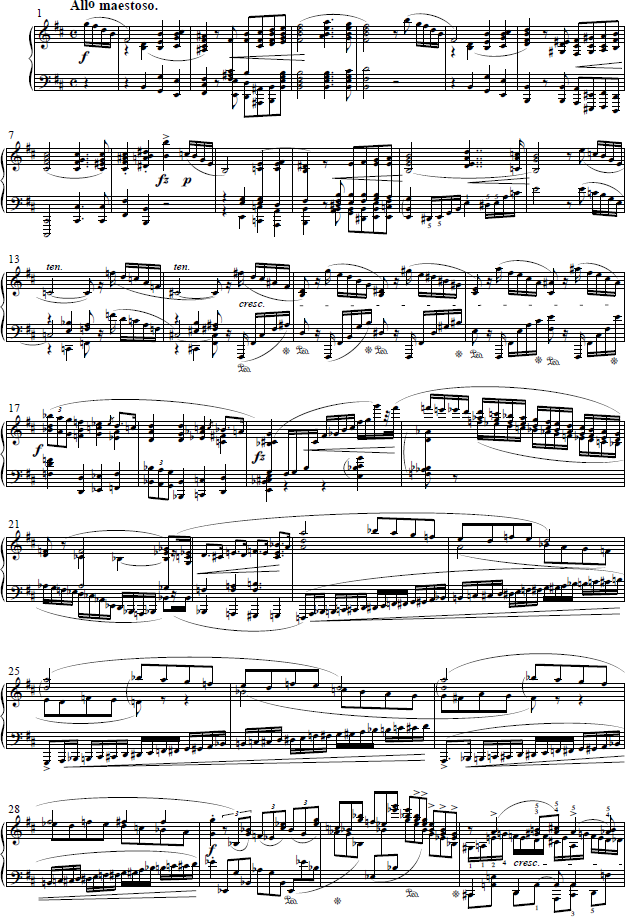
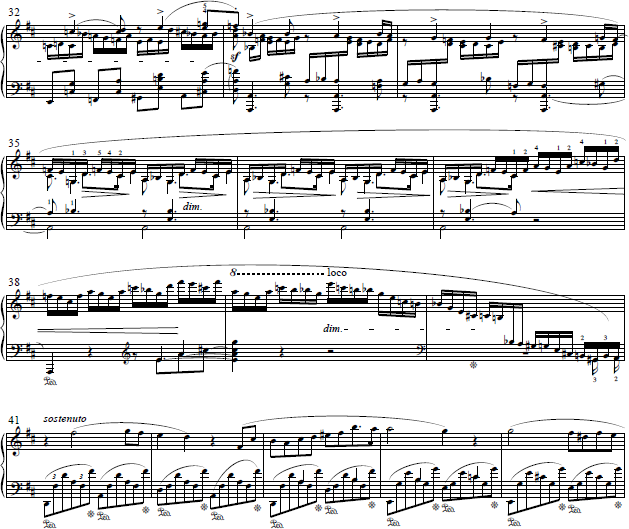
Example 0.1. Chopin, Piano Sonata in B minor, op. 58, i, mm. 145.
At this point, thankfully, the transition (surely we must still be in the sonatas transition?) becomes somewhat more coherent and easier to explain: m. 33 arrives on a dominant pedal in D major (the original nonmodulating transition has become a modulating one), which in turn leads unproblematically to a half cadence in m. 39 (the expositions medial caesura [MC]) and, finally, in m. 41, to a typically Chopinian secondary theme (S)a lyrical nocturne in D major.
Exactly what do we make of these events, structurally and expressively? What do we make of the diminished-seventh chord in m. 19 and the music that follows? Is this all part of an exceedingly developmental transition that we should accept as representative, within the expanded tonal-formal language of the mid-nineteenth century? Is it possible that we have no transition at all in this piece, and that instead we have a lengthy, exceptionally developmental P-theme that modulates and cadences (in m. 39 or m. 41), and that as a whole obviates the need for a Classical sonata transitionall in the name of achieving unity and organic growth typical of nineteenth-century musical style and aesthetics? Or is it possible that all these events together manifest Chopins struggles with how to build a coherent, large-scale form such as a sonata, and that they confirm the long-standing critical notion that he may have been better served by working in the smaller genrescharacter pieces and other kinds of salon musicin which he had found so much success?
Next page
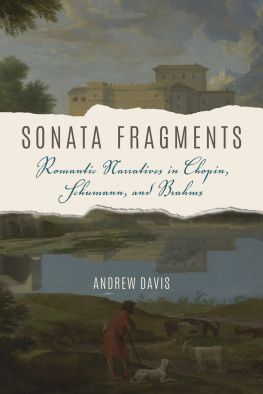
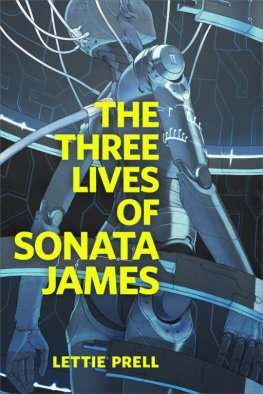
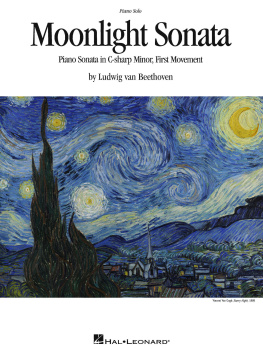

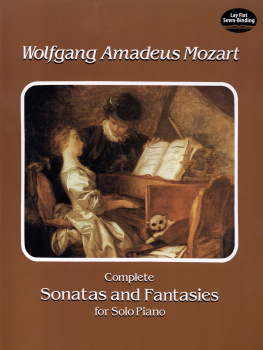

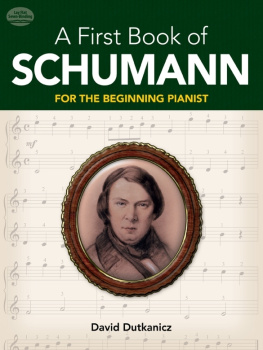
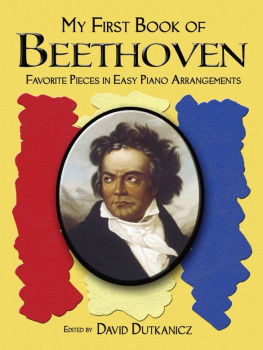

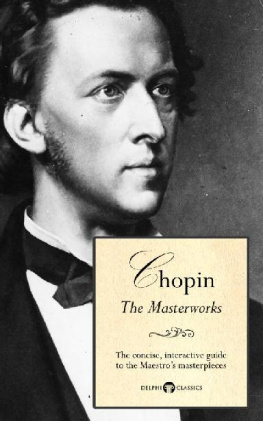
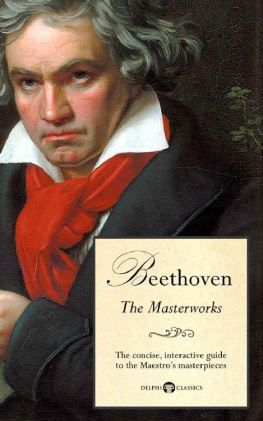
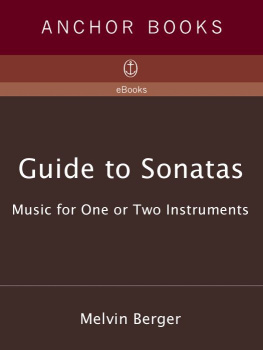


 The paper used in this publication meets the minimum requirements of the American National Standard for Information SciencesPermanence of Paper for Printed Library Materials, ANSI Z39.48-1992.
The paper used in this publication meets the minimum requirements of the American National Standard for Information SciencesPermanence of Paper for Printed Library Materials, ANSI Z39.48-1992.
